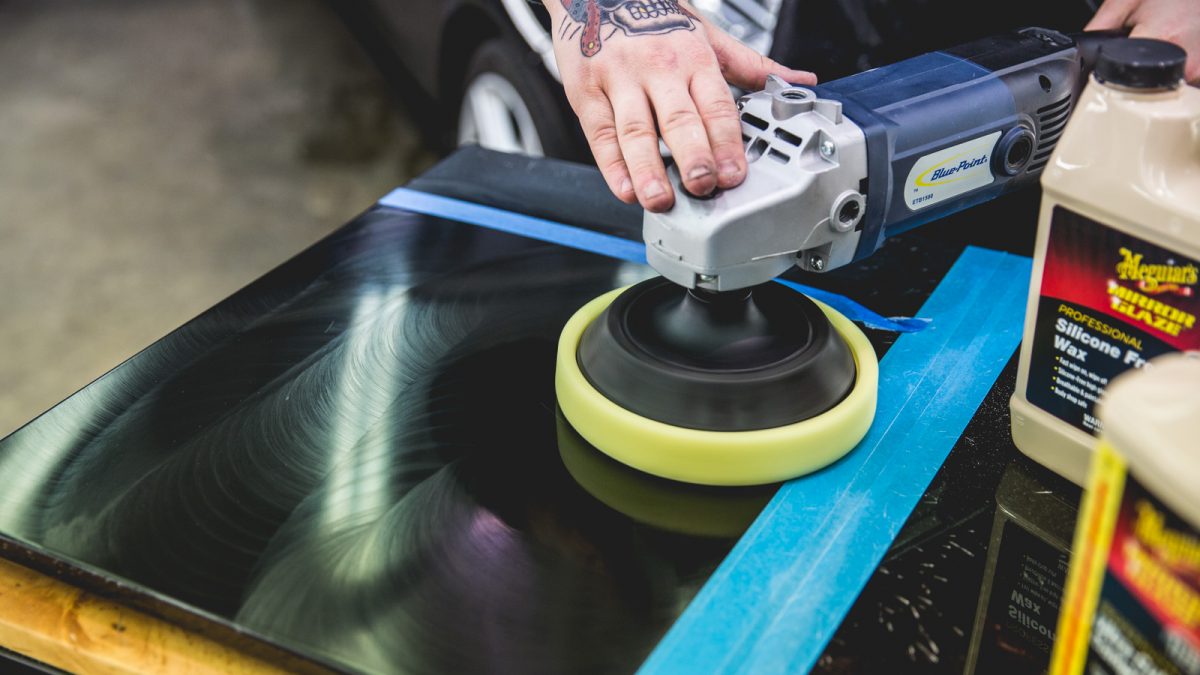Get ready to take your car detailing skills to the next level! Whether you’re a seasoned pro or just starting, using a car buffer can make all the difference in achieving that flawless, showroom-worthy shine. But before you dive into buffing away, it’s important to familiarize yourself with some common mistakes that beginners often make. By avoiding these pitfalls and implementing a few pro tips, you’ll be on your way to achieving professional results and turning heads wherever the road takes you. So grab your buffer and let’s get started on this journey toward automotive perfection!
Common Mistakes Made by Beginners
Mistakes are a natural part of any learning process, and using a car buffer is no exception. Let’s explore some common missteps that beginners often encounter when tackling this task.
One of the first mistakes is not choosing the right buffer for your specific car. With so many options available in the market, it can be overwhelming to select the perfect one. It’s crucial to consider factors like power, speed settings, and pad compatibility to ensure optimal performance and prevent potential damage to your vehicle’s paint.
Another mistake beginners make is using the wrong pads or products with their buffers. Different pads offer varying levels of aggressiveness, designed for specific applications such as compounding, polishing, or waxing. Using an incorrect pad can result in uneven finishes or even swirl marks on your car’s surface.
Improper technique and speed control also contribute to subpar results. Beginners may apply too much pressure or move the buffer too quickly across the panels without allowing enough time for compounds or polishes to work their magic effectively.
To avoid these mistakes as a beginner, take time to research and invest in a high-quality buffer suitable for your needs. Read product reviews and seek recommendations from experienced detailers who have achieved exceptional results using buffers similar to what you’re considering.
Additionally, educate yourself about different types of pads and products best suited for various stages of buffing. Experiment with different techniques like overlapping passes at slower speeds while maintaining proper pressure on the surface being worked on.
Remember that practice makes perfect! Take your time during each step of buffing – from prep work through finishing touches – ensuring attention to detail every step along the way will yield professional-looking results faster than you think!
By avoiding these common mistakes made by beginners when using a car buffer, you’ll be well-equipped with the knowledge necessary for achieving spectacular outcomes in no time at all! So grab that buffing machine with confidence; your car will thank you later!
Not Choosing the Right Buffer for Your Car Buffer
Not choosing the right car buffer can be a common mistake that many beginners make when attempting to polish their vehicles. With so many options available in the market, it’s important to choose a buffer that suits your specific needs Car Buffer.
One mistake often made is selecting a buffer with too high or too low of a speed setting. If the speed is too high, you risk damaging the paint and creating swirl marks. On the other hand, if the speed is too low, you may not achieve the desired results.
Another factor to consider is the type of buffer pad compatible with your chosen machine. Different pads are designed for different purposes – cutting pads for heavy correction, polishing pads for enhancing gloss and finishing pads for final touch-ups. Using an incorrect pad can lead to subpar results or even damage to your vehicle’s surface.
Additionally, it’s crucial to choose buffers from reputable brands known for their quality and reliability. Investing in a reliable buffer will ensure longevity and allow you to achieve professional-level results consistently.
Taking time to research and select the right car buffer based on your needs is essential for achieving optimal results without causing any harm to your vehicle’s paintwork. So remember: do thorough research on buffers suitable for your specific requirements before making a purchase!
Using the Wrong Pads or Products
Using the wrong pads or products is a common mistake that many beginners make when using a car buffer. It may seem like a small detail, but it can have a big impact on the final result of your buffing job.
One mistake is using abrasive pads or compounds that are too harsh for your car’s paint. This can lead to scratches and swirl marks, which is exactly what you’re trying to avoid by using a buffer in the first place! It’s important to choose pads and products specifically designed for your car’s finish and the level of correction needed.
On the other hand, using soft or gentle pads with mild polishing compounds might not be enough to remove deeper scratches or imperfections. You need to find the right balance between aggressiveness and gentleness based on your car’s condition.
Additionally, not properly cleaning or maintaining your pads can also affect their performance. Over time, residue from previous uses can build up on the pad surface, reducing its effectiveness. Make sure to clean them thoroughly after each use and replace them when they become worn out.
To avoid these mistakes, do some research before purchasing any buffers, pads, or compounds. Read reviews and product descriptions carefully to ensure they are suitable for your specific needs. Always follow instructions provided by manufacturers regarding usage techniques and recommended speeds for optimal results.
By choosing the right pads and products for your car’s paint type and condition, you’ll achieve better results with minimal risk of causing damage during buffing sessions.
Improper Technique and Speed
When it comes to using a car buffer, technique and speed are crucial factors that can make or break your results. One common mistake beginners often make is applying too much pressure when using the buffer. This can lead to swirl marks and scratches on the car’s surface.
To avoid this mistake, it’s important to use light pressure and let the machine do the work for you. Remember, less is more in this case! Additionally, be mindful of your speed while operating the buffer. Going too fast can result in uneven polishing and an inconsistent finish.
Another aspect of improper technique is not properly priming the pad before starting to buff. Failing to do so can cause product splattering or uneven application on the car’s surface. Take a few moments to evenly distribute polish or compound on the pad before beginning your buffing process.
Beginners often neglect proper hand positioning while operating a buffer. It’s essential to have firm control over the machine by holding it with both hands and maintaining a balanced stance during operation.
By avoiding these mistakes and focusing on using proper technique along with an optimal speed, you’ll improve your chances of achieving professional-looking results with your car buffer!
How to Avoid These Mistakes and Achieve Professional Results
Now that you are aware of the common mistakes beginners make when using a car buffer, it’s time to learn how to avoid them and achieve professional results. By following these pro tips, you will be able to get the most out of your car buffer:
1. Choose the Right Buffer: Take into consideration the size and power of the buffer that best suits your needs. Research different models and read reviews before making a purchase.
2. Select Suitable Pads and Products: Use high-quality pads that match your specific polishing or waxing needs. Different pads are designed for different purposes, so choose wisely. Additionally, use compatible products that are specifically formulated for automotive use.
3. Practice Proper Technique: Start by familiarizing yourself with how to hold and operate the buffer correctly. Apply even pressure while moving in straight lines instead of random patterns. Be patient and take your time, allowing each section enough attention without rushing through.
4. Control Your Speed: It’s important not to rush when using a car buffer as this can lead to uneven results or damage the paintwork on your vehicle. Avoid excessive speed settings on your buffer; instead, start at a lower speed setting until you become more comfortable with its usage.
5. Work in Sections: Don’t try to tackle your entire vehicle at once; instead, work in small sections at a time (around 2×2 feet). This will ensure thorough coverage and prevent any areas from being missed or overworked.
6. Clean & Maintain Your Buffer: After each use, clean your buffing pads thoroughly according to manufacturer instructions. Also regularly inspect your buffer for any signs of wear or damage that may affect its performance.
By following these tips consistently, you’ll be able to avoid common mistakes made by beginners and achieve professional-grade results every time you use a car buffer!
Remember – practice makes perfect! The more experience you gain and the more familiar you become with your car buffer, the better results you.

